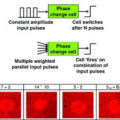
Earth-based astronomers can detect extrasolar planets as they transit across the face of distant stars, so alien astronomers should be able to detect the Earth as it moves across the face of our sun. That’s the logic behind a novel proposal to search for extraterrestrial radio signals in a tiny segment of the sky called the ecliptic band. The people behind the proposal, Richard Conn Henry, an astronomer at Johns Hopkins, along with Seth Shostak of the SETI Institute and Steven Kilston of the Henry Foundation Inc., intend to use the new Allen Telescope Array to conduct their highly targeted search.
According to Henry, who is presenting the proposal at the American Astronomical Society (AAS) annual meeting in St. Louis, the ecliptic band – a great circle around the sky that represents the plane of Earth’s orbit – is the critical place to search. The sun, as viewed from Earth, appears annually to pass along this circle. Any civilization that lies within a fraction of a degree of the ecliptic could annually detect Earth passing in front of the sun. Encouragingly, the ecliptic band comprises only about 3 percent of the sky, which would dramatically reduce the amount of radio telescope time needed to conduct the search.
Most of the 100 billion stars in our galaxy are located in the galactic plane, forming another great circle around the sky. The two great circles intersect near Taurus and Sagittarius, two constellations opposite each other in the Earth’s sky – areas where the search will initially concentrate. “The crucial implication is that this targeted search in a favored part of the sky – the ecliptic stripe, if you will – may provide us with significantly better prospects for detecting extraterrestrials than has any previous search effort,” Kilston said.
The team’s presentation at the AAS meeting also explored possible scenarios for the appearance of civilizations in our galaxy. “These models are nothing but pure speculation. We have no idea how many – if any – other civilizations there are in our galaxy. One critical factor is how long a civilization remains in existence. If, as we dearly hope, the answer is many millions of years, then even if civilizations are fairly rare, those in our ecliptic plane will have learned of our existence. They will know that life exists on Earth and they will have the patience to beam easily detectable radio signals in our direction,” Henry concluded.
Related:
ETs Very Unlikely, New Calculations Suggest
We Come In Peace – NOT!
Brits Invite ET Over For Corn Chips
Rethink ET Message Detection, Says Prof
First Light For SETI Optical Telescope








Comments are closed.